
When asked what they think the most iconic Allied bomber of the Second World War was, the majority of historians and aircraft enthusiasts will likely pick the Boeing B-17 Flying Fortress. The heavy bomber was operated by the US Army Air Forces (USAAF) throughout the conflict, dropping hundreds of thousands of tons of bombs over German-occupied Europe and seeing action in the Pacific Theater.
The following are some interesting facts about the B-17 and its iconic, albeit short-lived, career.
Off to a less-than-promising start…
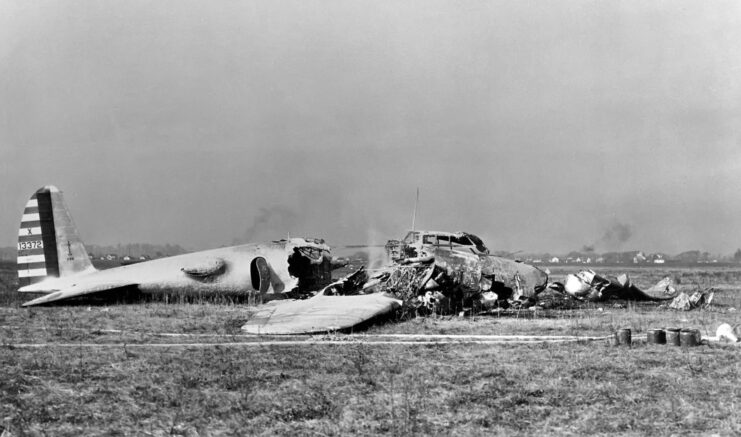
Wreck of the Model 299, following the crash on October 30, 1935. (Photo Credit: U.S. Air Force / Wikimedia Commons / Public Domain)
The B-17 Flying Fortress traces in origins back to a request from what was then the US Army Air Corps (USAAC) for an aircraft that could be used for coastal defense. Boeing’s answer was the Model 299, a four-engine aluminum bomber that would feature several machine guns.
The Model 299 first took to the sky in August 1935, with a test flight planned for that October to determine the aircraft’s rate of climb and service ceiling. This took place on the 30th, with Maj. Ployer Peter Hill and Lt. Donald Putt serving as pilot and co-pilot, respectively. John Cutting, a test observer from Wilbur Wright Field; mechanic Mark Koegler; and Boeing chief test pilot Leslie R. Tower were also aboard the bomber.
As the B-17 taxied down the runway and took off, everything appeared to be going as planned. However, the crew had forgotten to release the “gust flap,” a type of safety device designed to prevent the aircraft’s flaps from sustaining wind damage while sitting on the runway. This caused the bomber to stall and spin toward the ground, where it erupted into flames.
The incident almost ruined Boeing, which had sunk everything it had into developing the aircraft. While the USAAC went on to choose the option submitted by the Douglas Aircraft Company, the B-18 Bolo, the military branch was so impressed with what Boeing promised with the Model 299 that it found a legal loophole and ordered 13 newer models, then designated the YB-17.
What’s in a name?
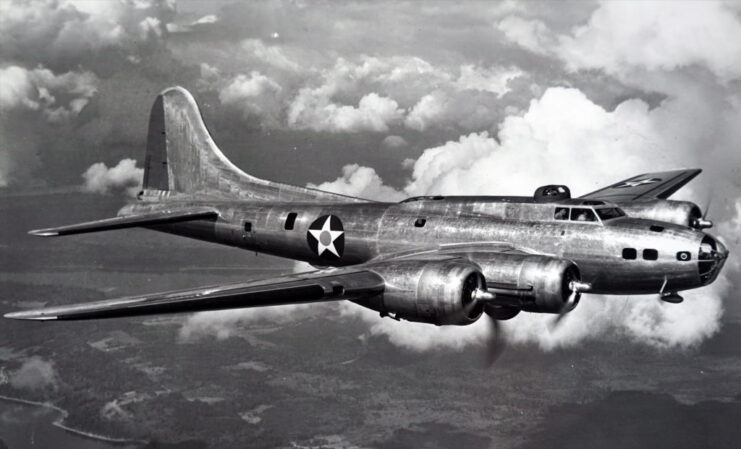
Boeing B-17 Flying Fortress. (Photo Credit: Universal History Archive / Universal Images Group / Getty Images)
While you might assume the B-17 Flying Fortress got its name from engineers at Boeing, it actually came from a reporter with The Seattle Times! The bomber made its public debut in July 1935, with Leslie R. Tower at the controls. Impressed with what he saw, reporter Richard Williams reportedly cried out, “Why, it’s a flying fortress!” The phrase also appeared under a photograph of the aircraft in the newspaper, with him describing what was then the Model 299 as a “15-ton flying fortress.”
Third-most-produced bomber aircraft of all time

Consolidated B-24 Liberator from Maxwell Field, Alabama, 1941-42. (Photo Credit: U.S. Air Force / Wikimedia Commons / Public Domain)
From 1936-45, Boeing produced an impressive 12,731 B-17 Flying Fortresses, making it the third-most-produced bomber of all time. The aircraft holding the first two spots are the Consolidated B-24 Liberator, of which 18,188 rolled off the manufacturing line, and the Luftwaffe-flown Junkers Ju 88 – 15,183 of those were built.
Only six B-17 Flying Fortresses remain airworthy
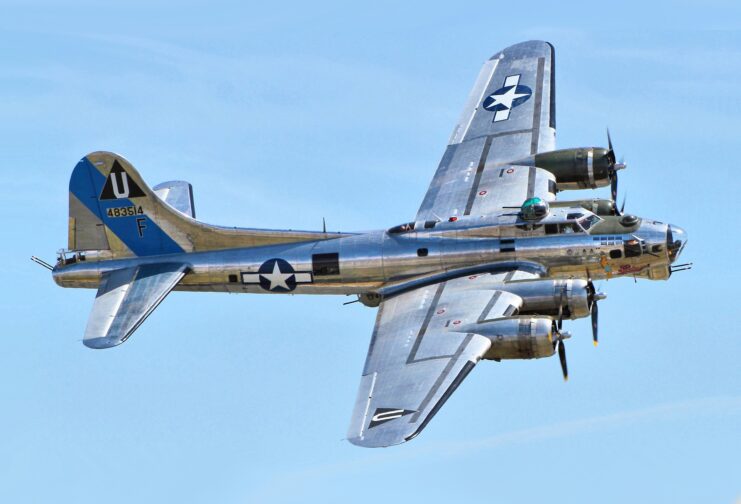
Boeing B-17G Sentimental Journey, 2014. (Photo Credit: Airwolfhound / Wikimedia Commons / Public Domain)
The number of B-17 Flying Fortresses that remain airworthy differs, depending on the source. Some claim 10 are still capable of flying, while others put the number as low as four. However, the majority agree there are actually six: Sentimental Journey, 44-83546, Yankee Lady, Aluminum Overcast, 44-8543 and Sally B.
In November 2022, one of the few remaining airworthy B-17s, Texas Raiders, was destroyed in a mid-air collision at the Dallas Air Show. The incident, which also involved a World War II-era Bell P-63 Kingcobra, killed everyone aboard the two aircraft. The cause of the crash was believed to be the result of both pilots flying at the same altitude, as they hadn’t received altitude advice prior to takeoff.
The B-17 Flying Fortress’ first air raid over Europe

Boeing B-17 Flying Fortresses with the Eighth Air Force, 1944. (Photo Credit: Bettmann / Getty Images)
Just months after the Eighth Air Force arrived in England, on August 17, 1942, the B-17 Flying Fortress was involved in its first bombing raid over German-occupied Europe. That day, 12 B-17Es with the 97th Bomb Group (Heavy), with an escort of nine Royal Air Force (RAF) Supermarine Spitfire squadrons (four during, five ensuring the withdrawal was successful), launched an attack on the bustling marshaling yards at Rouen-Sotteville in northern France.
Led by Maj. Paul Tibbets, the raid was a success, with half of the bombs dropped hitting their targets and between one and two (sources vary) of the bombers suffering minor damage.
Dropping 640,000 tons of bombs on Germany during World War II

Boeing B-17 Flying Fortress. (Photo Credit: H. Armstrong Roberts / Classicstock / Getty Images)
As aforementioned, the B-17 Flying Fortress saw continued service with the USAAF throughout the Second World War, and while there were significant casualties at times, the bomber was largely successful in bombing German-held targets. It’s reported that, of the 1.5 million tons of bombs dropped by the Allies in Europe, more than 640,000 tons were deployed by the American aircraft.
A B-17 Flying Fortress crash-landing involved a monkey

Lt. Col. Sean Cosden of the US Defence Attache with the statue of Tojo at O’Donovan’s Hotel in Clonakilty, Ireland, 2017. (Photo Credit: Julien Behal / PA Images / Getty Images)
Some wild stories emerged during World War II and none were as captivating as that of Tojo, the monkey who allegedly crash-landed in Ireland in a B-17 Flying Fortress.
As the story goes, the crew of this particular B-17 was keeping Tojo as a pet, and the monkey was aboard the bomber when it ran out of fuel over Ireland and was forced to crash-land. An incorrect radio report led the crew to fly off course and, believing they had landed in German-occupied Norway, they were prepared to take their own lives with cyanide tablets. However, they quickly realized they were on the Emerald Isle, in the town of Clonakilty, and there was no need to panic.
The airmen were treated well by the residents of the small community, leading to a three-day party that saw everyone involved consume a large quantity of rum – including Tojo. His taste for the drink led him to catch pneumonia and he died just a few days later. He received a traditional Irish wake, with full military honors.
In memory of the primate, a statue of Tojo was unveiled in 2013.
The B-17 Flying Fortress has seen use as an airliner
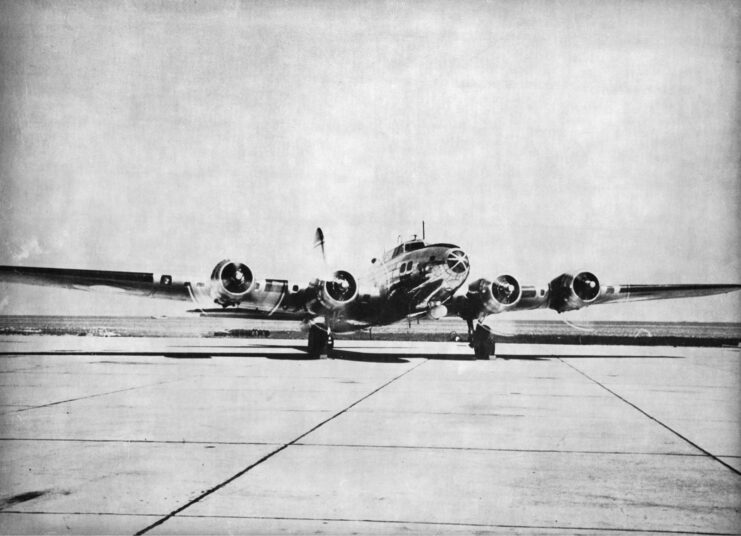
B-17 “Felix,” one of the Flying Fortresses turned into an airliner, 1946. (Photo Credit: SAS Scandinavian Airlines / Wikimedia Commons / Public Domain)
Following the Second World War, the majority of B-17 Flying Fortresses were cut down and sold for scrap. Eight, however, saw a renewed purpose as airliners.
The octet was converted by manufacturer Saab and redesignated “Felix,” with five operated by Swedish Intercontinental Airlines and two being sold to Danish Airlines (don’t ask us what happened to the eighth). The “Felix” B-17s remained in service for just a few years, with the last retired in 1948.
Seventeen B-17 Flying Fortress crewmen received the Medal of Honor

Staff Sgt. Maynard Harrison Smith receiving the Medal of Honor from US Secretary of War Henry L. Stimson, 1943. (Photo Credit: Fred Ramage / Keystone / Hulton Archive / Getty Images)
Given the number of missions B-17 Flying Fortress crews flew throughout World War II, it’s no surprise that many airmen were officially recognized for their bravery. Of those to receive decorations, 17 were bestowed with the prestigious Medal of Honor.
There were far too many heroic acts to detail in this section, so we’ll highlight the ones that caught our eye.
During a raid on the German U-boat pens at Saint-Nazaire, Maynard Harrison Smith showed immense bravery when the B-17 he was aboard was struck by anti-aircraft fire, causing it to erupt into flames. Along with helping his wounded comrades, he risked his life to rid the aircraft of its burning ammunition boxes and manned two machine guns. When the B-17 landed back at base, it immediately fell apart, but, thanks to Smith’s actions, the majority of his fellow crewmen were alive.
Bombardier David R. Kingsley was posthumously awarded the Medal of Honor for his selflessness during a raid over Ploiești, Romania. Similarly to Smith’s B-17, the one Kingsley was aboard suffered immense damage, which led the pilot to order the crewmen to bail out. Instead of using it to save his own life, the second lieutenant gave his parachute to a comrade who’d lost his, leading to his death when the bomber crashed into the ground shortly after.
A bet between Dwight D. Eisenhower and Bernard Montgomery

Field Marshal Bernard Montgomery and US President Dwight D. Eisenhower, 1954. (Photo Credit: Bettmann / Getty Images)
One of the most unusual owners of a B-17 Flying Fortress was without a doubt British Field Marshal Bernard Montgomery.
As the fighting in North Africa raged on, Gen. Dwight D. Eisenhower was eager to get the job finished. It’s alleged that during a visit with Montgomery in early 1943, the future US president’s chief of staff, Maj. Gen. Bedell Smith, was asked by the then-British general if he could obtain a B-17 for his own personal use. Smith told him he could, so long as Montgomery captured Sfax, Tunisia by April 15 of that year.
Sure enough, Montgomery was successful in this endeavor, capturing the city five days earlier than promised. Eisenhower held up his end of the bargain and gave his ally the bomber, albeit reluctantly. However, Montgomery didn’t own the aircraft for long, as it was crashed a month later and written off.
Oldest B-17 Flying Fortress? The Swoose
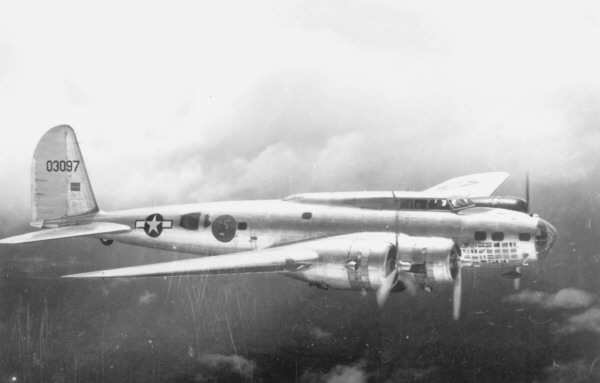
B-17D-BO Flying Fortress The Swoose. (Photo Credit: US Government / Wikimedia Commons / Public Domain)
The B-17D-BO Flying Fortress The Swoose is the oldest surviving B-17 in existence and is the only “D” variant aircraft still around. Originally named Ole Betsy, this particular bomber was assigned to the 19th Bombardment Group at March Field, California, and saw a lot of action in the weeks following the Japanese attack on Pearl Harbor, including the first American combat mission in the Philippines.
It was while serving in the Pacific Theater that Ole Betsy became The Swoose. As the story goes, Capt. Weldon Smith enjoyed the Franklin Furlett and Kay Kyser tune, “Alexander the Swoose,” about a half-goose, half-swan creature, and soon renamed the B-17 after the song.
By March 1942, having served in combat and patrol operations, The Swoose was removed from frontline service and turned into the personal transport aircraft for Gen. George Brett. Following World War II, the bomber was obtained by the Smithsonian, and it remained under the institution’s purview until 2008, when it was acquired by the National Museum of the US Air Force.
Presently, The Swoose is undergoing a seven-year restoration
Surpassed by the B-29 Superfortress

Boeing B-29 Superfortress. (Photo Credit: U.S. Air Force / Wikimedia Commons / Public Domain)
The Boeing B-29 Superfortress was an icon of the early Cold War period, but did you know the bomber was developed as a replacement for both the B-17 Flying Fortress and the B-24 Liberator?
Entering service in 1944, the B-29 was a high-altitude strategic bomber that participated in the atomic bombings of Hiroshima and Nagasaki. Its origins date back to before the Second World War, with the USAAC concluding the B-17 wouldn’t be as useful when it came to operations in the Pacific – an aircraft with a better range and the ability to hold a larger payload was needed.
The B-29 saw active service in the latter parts of World War II and throughout the Korean War. It was ultimately retired in 1960, having been replaced by the Convair B-36 Peacemaker, the Boeing B-50 Superfortress and the B-47 Stratojet.





